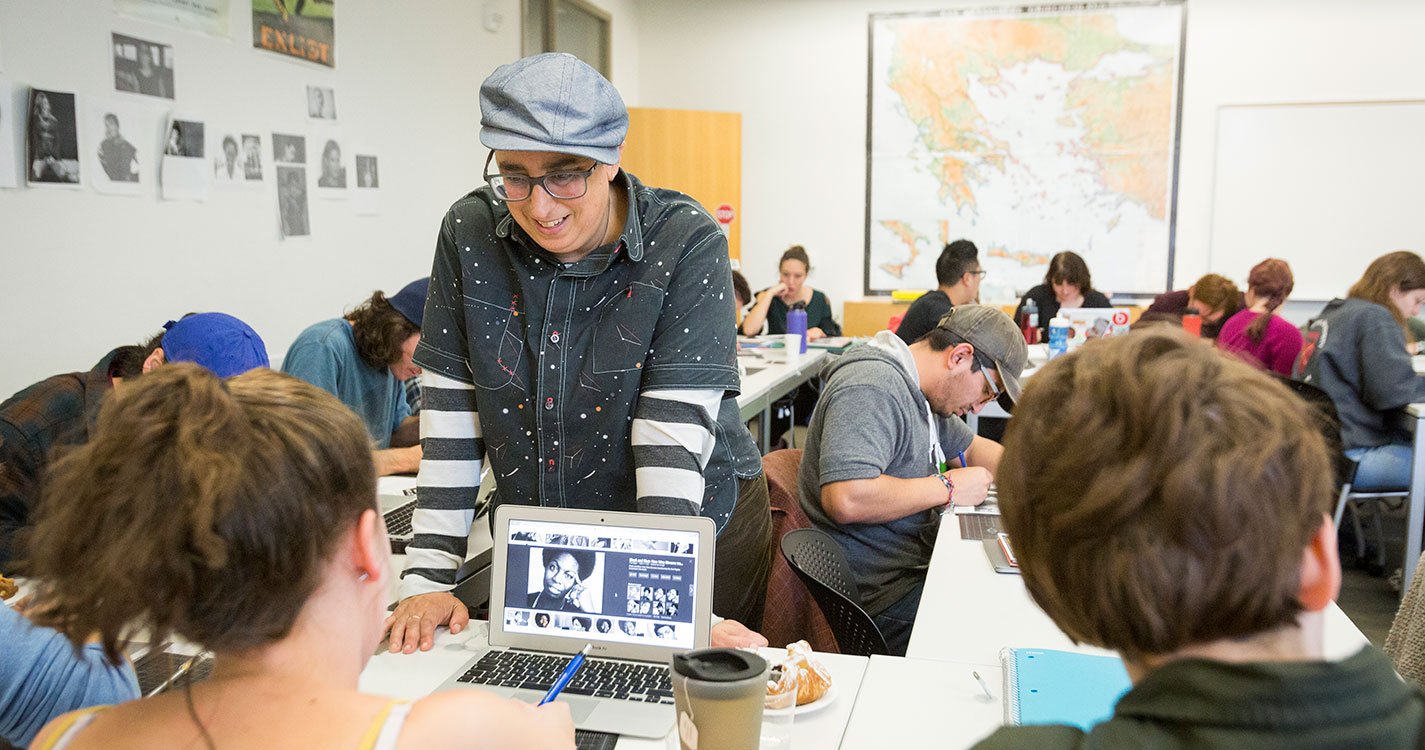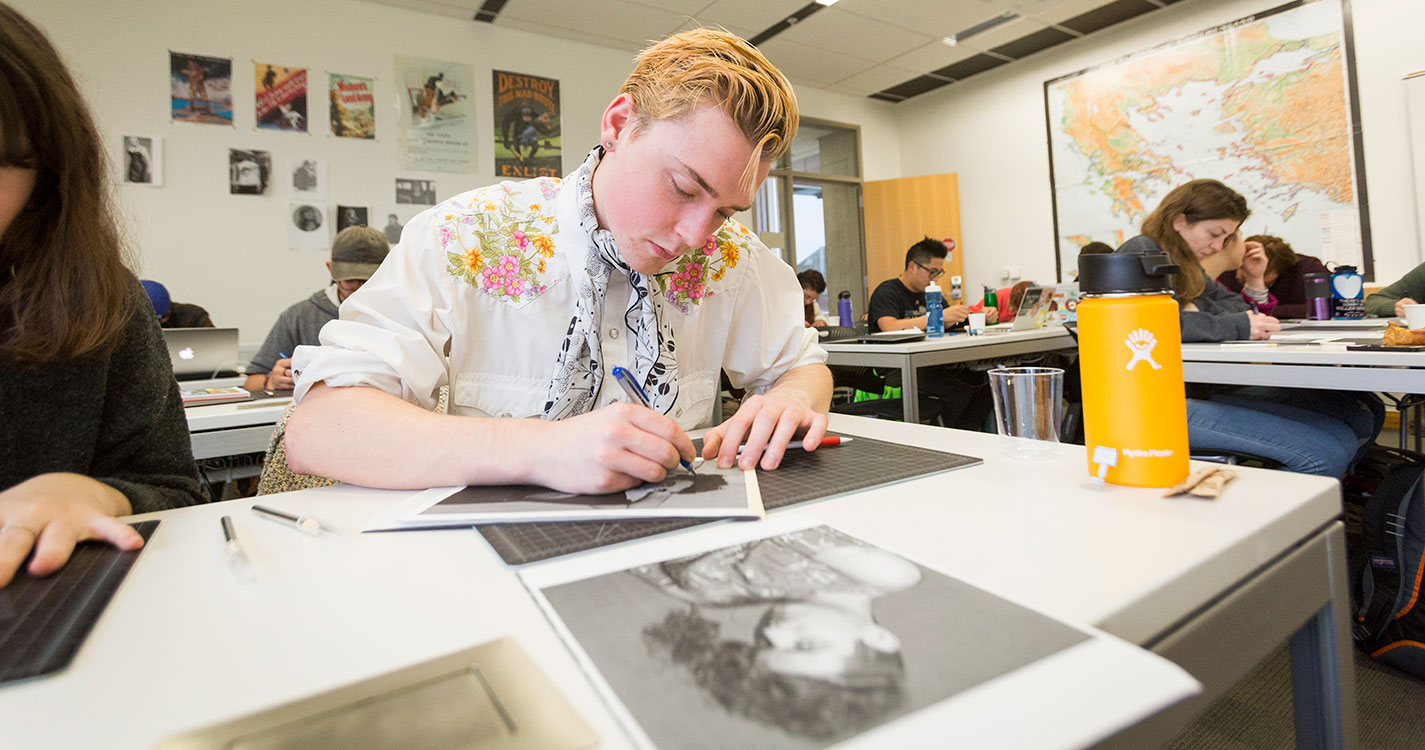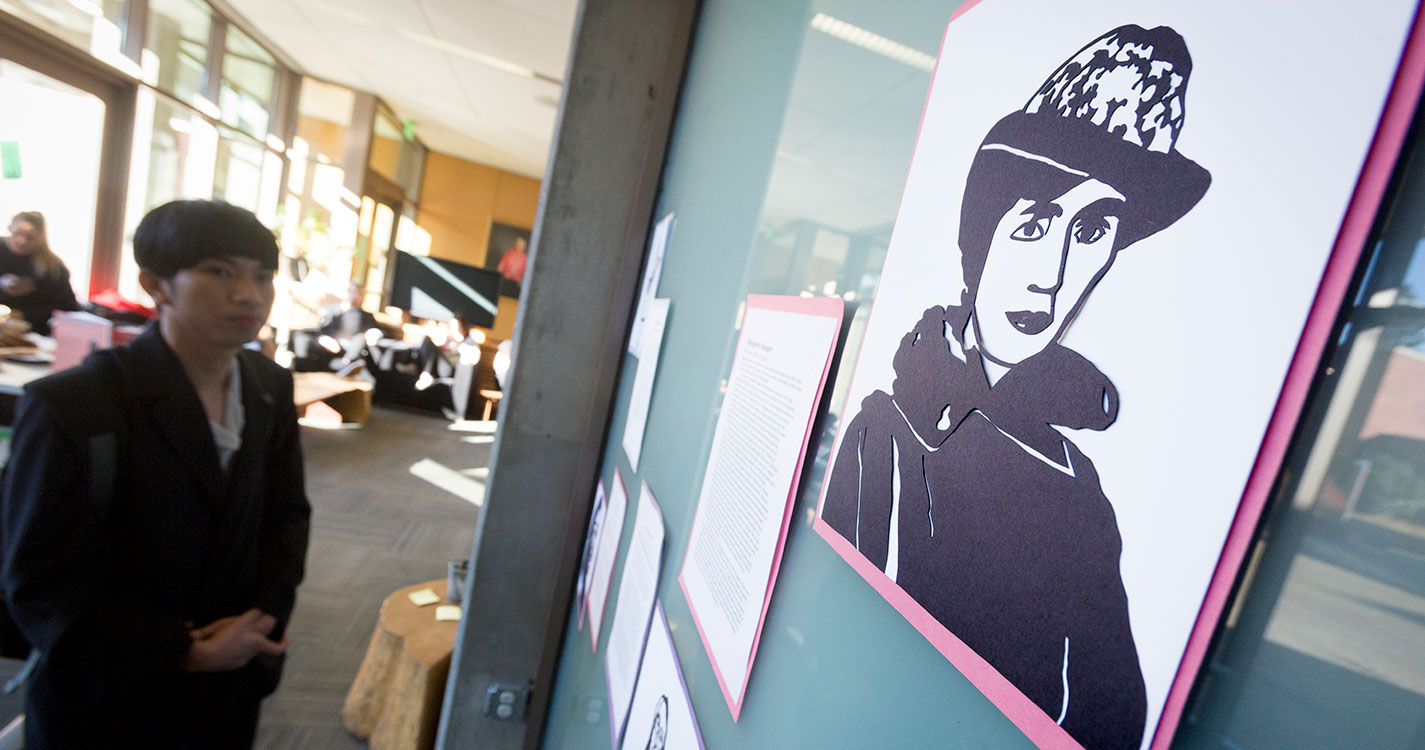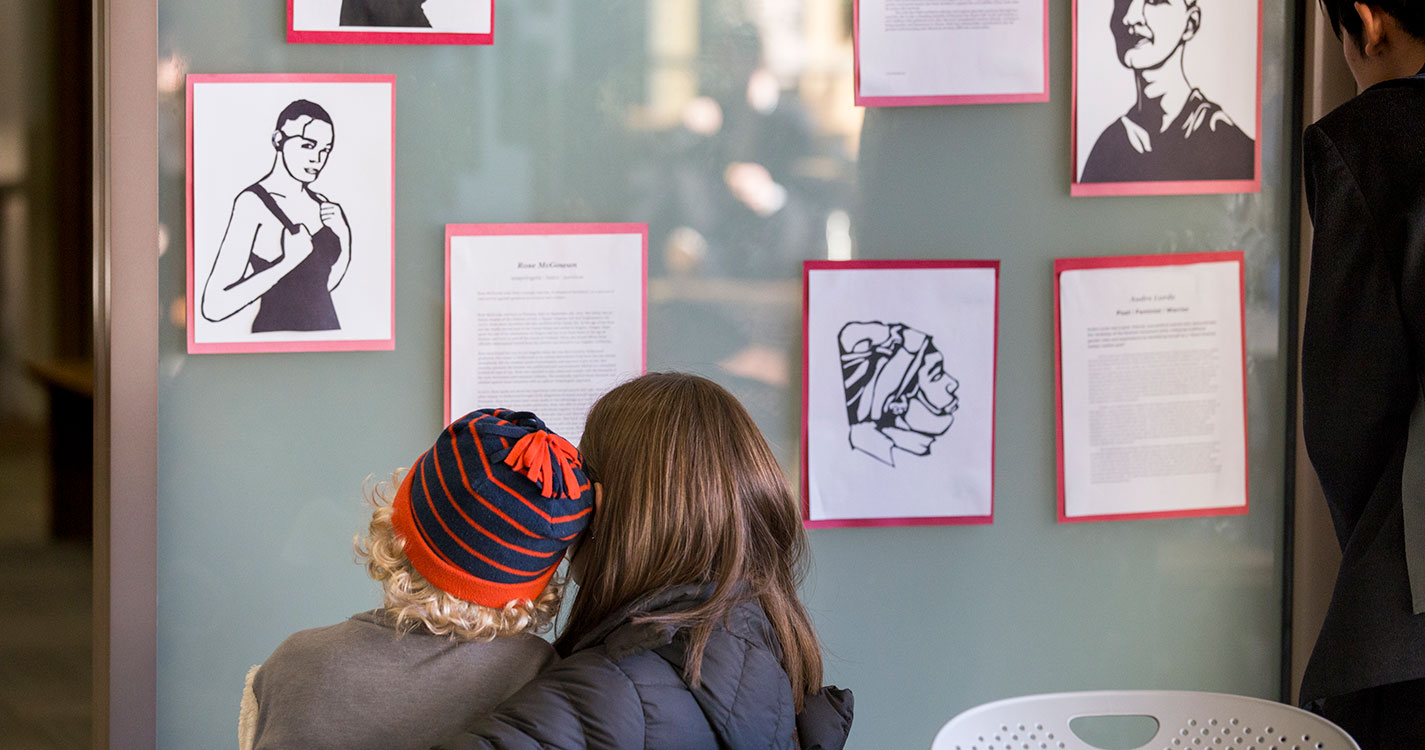When words could not fully capture the lives and influence of America’s women, an author and an artist turned to X-Acto knives.
Through text and paper-cut illustrations that bring to mind homemade zines, Bay Area author Kate Schatz and artist Miriam Klein Stahl highlight 26 famous and not-so-famous women in their New York Times bestseller, “Rad American Women A-Z: Rebels, Trailblazers, and Visionaries Who Shaped Our History … And Our Future!” The women featured include actress Carol Burnett, activist Yuri Kochiyama and labor leader Dolores Huerta.
Schatz and Klein Stahl visited the Willamette campus in November. In addition to speaking at a university event open to the public, they helped teach Civic Communication and Media (CCM) students how to bring the courageous people they admire to life.
In a half-day workshop, the artists worked with students to refine their chosen biographies and create paper-cut portraits of people such as as famed portrait photographer Annie Leibovitz, singer and activist Nina Simone and Alok Vaid-Menon, an American Indian performance artist and poet who uses they/them pronouns.
William Forkin ’19, a theatre major who uses she/her pronouns, chose Vaid-Menon because the artist offered a good opportunity to discuss whether feminist rhetoric reinforces traditional notions of gender.
Designed to increase public understanding of women’s contributions to American life, the creations were students’ final project for the “U.S. Women’s Activism Since 1920” class, taught by Associate Professor Cindy Koenig Richards. The course counts toward the American Ethnic studies and women’s and gender studies programs in addition to CCM. Featured in a Dec. 7 pop-up exhibit at Ford Hall, they will eventually be published on a website designed by other CCM students in the “Designing Media” class.
Schatz says creating a portrait gives students a different way to express and experience how they tell stories.
“When you’re writing a person’s biography, you’re thinking of who they are and the details of their life,” she says. “But when you have to present them in a visual way, I think it deepens the connection (students) have to the story they want to tell.”
Schatz and Klein Stahl’s book — as well as their 2016 follow-up, “Rad Women Worldwide: Artists and Athletes, Pirates and Punks, and Other Revolutionaries Who Shaped History” — is mostly geared for younger readers. Schatz told Willamette students that translating academic terms into simpler language can be a “cool challenge.”
“How do you explain rhetoric to a third-grader? How do you define these complicated academic terms that are really important and powerful but still make them accessible?” she says. “Trying to write for children is good practice for communicating to the outside world in general.”
Willamette students learned a similar lesson writing their biographies. Initially, Jonathan Kerth ’18 thought it would be easy to condense the life of Norma Paulus JD’62 — who graduated from Willamette’s College of Law and later became Oregon’s first female Secretary of State — into a few paragraphs.
Kerth, a psychology major, chose Paulus because she had “a big impact” on Oregon. Then he found it difficult to select and succinctly explain her most important contributions.
“It’s a very artful way of writing,” he says. “It was an eye-opening experience.”






